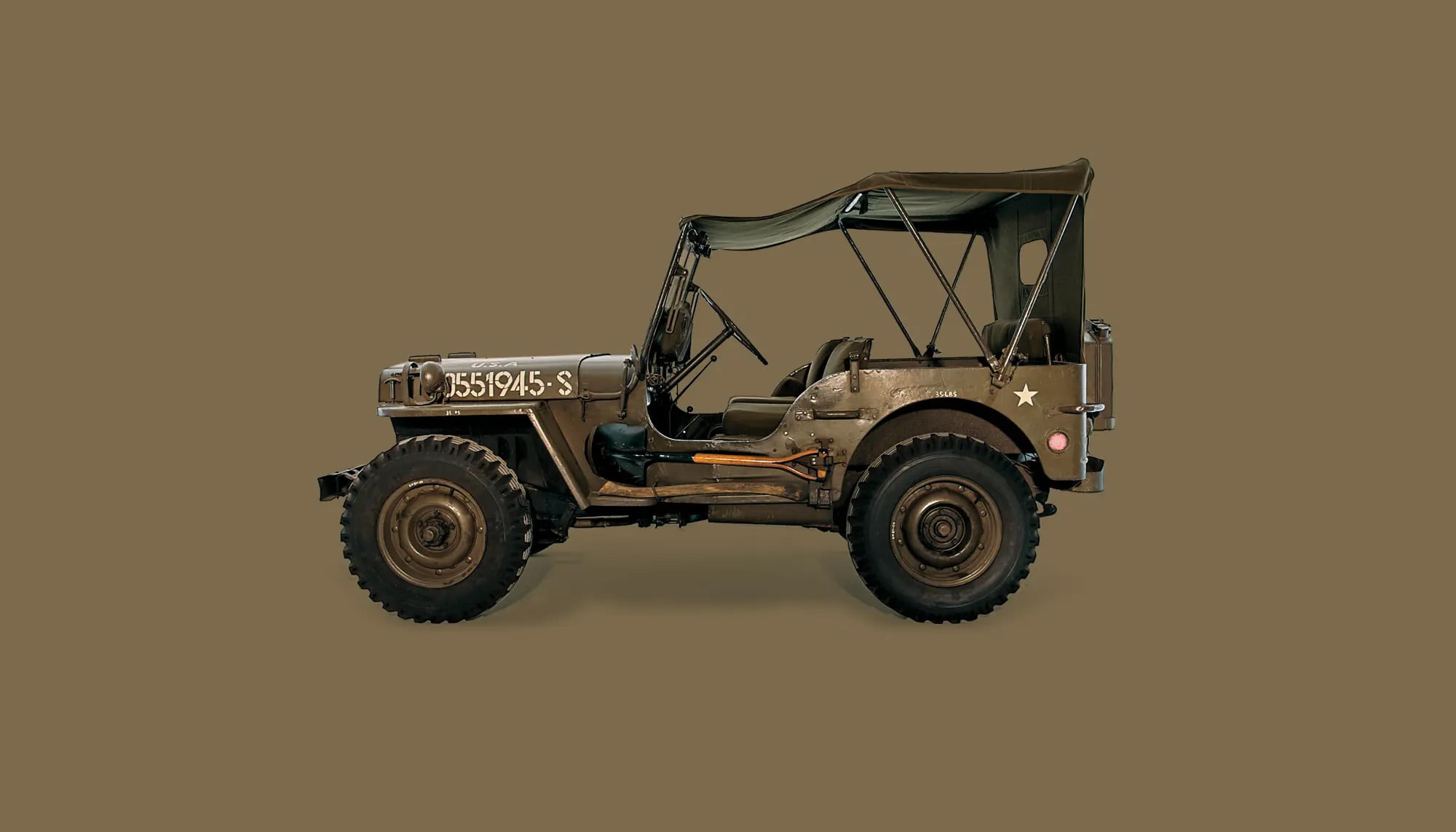Willys Jeep Model MB
The jeep became the most famous and most recognisable vehicle of World War II.
Purely functional yet beautiful in its own way. However, before the war the American army had already been looking for a light, manoeuvrable and versatile reconnaissance vehicle. In 1940 some one hundred manufacturers were invited to present their proposals, but the conditions set by the government were so stringent that only Willys-Overland and American Bantam remained as contenders. The government itself included Ford due to its enormous production capacity; however, the long-term contract was awarded to Willys because their prototype had the best power/weight ratio and an excellent and literally indestructible engine: the 2.2-litre, four-cylinder, Willys 442 ‘Go Devil’ side-valve engine.
By the end of the war 639,245 jeeps had been produced: 361,000 by Willys and the rest by Ford and Bantam. The cars had not only proved themselves as reconnaissance vehicles, but also as fire engines, field ambulances, cable layers, artillery tractors and even as locomotives. After the war the jeep continued its success story in both army and civilian use. In the Netherlands the jeep was produced under licence by NEKAF.
There are various theories concerning the naming of the jeep. The best known is that the name is a contraction of the letters GP, an acronym for General Purpose. Another theory is that the car was named after a character in the cartoon ‘Popeye the Sailorman’, called ‘Eugene the Jeep’ who could solve all sorts of problems.

